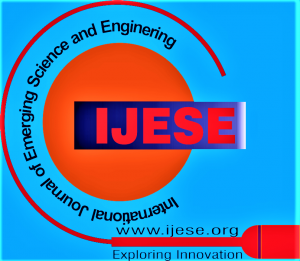![]()
Artificial Neural Network Approach to Distribution Transformers Maintenance
Omorogiuwa Eseosa1, Uhunmwangho Roland2
1Omorogiuwa Eseosa, Department of Electrical-Electronic Engineering, College of Engineering, University of Port Harcourt, Rivers State, Nigeria.
2Uhunmwangho Roland, Department of Electrical-Electronic Engineering, College of Engineering, University of Port Harcourt, Rivers State, Nigeria.
Manuscript received on August 01, 2015. | Revised Manuscript received on August 03, 2015. | Manuscript published on August 25, 2015. | PP:1-9 | Volume-3 Issue-10, August 2015. | Retrieval Number: I1021073915
Open Access | Ethics and Policies | Cite
© The Authors. Published By: Blue Eyes Intelligence Engineering and Sciences Publication (BEIESP). This is an open access article under the CC BY-NC-ND license (http://creativecommons.org/licenses/by-nc-nd/4.0/)
Abstract: Distribution Transformers (DTs) are important equipment in distribution network and system reliability largely depends on them, hence the requirement for proper and accurate maintenance procedure which is based on foreknowledge of intending faults. DTs, during operational lifetime are subjected to internal fault due to stress, thus generating abnormalities in electrical parameters, degradation of oil and cellulose insulations etc. These lead to overheating, partial discharge or corona which causes fault related gases such as hydrogen (H2 ), carbon monoxide (CO), carbon-dioxide (CO2 ,), methane (CH4 ), acetylene (C2H2 ), ethane (C2H6 ), and ethylene (C2H4 ) to dissolve in the oil insulation. In this paper, concentrations of fault related gases obtained from Dissolved Gas Analysis (DGA) coded by Roger’s ratio method were used to develop a model of Artificial Neural Network (ANN) in MatLab(2013a) to diagnose incipient faults in distribution transformers. The proposed network which was trained with back-propagation algorithm was use to satisfactorily predict faults in distribution transformers.
Keywords: Distribution Transformers (DTs), electrical parameters, Dissolved Gas Analysis (DGA), Artificial Neural Network (ANN).
